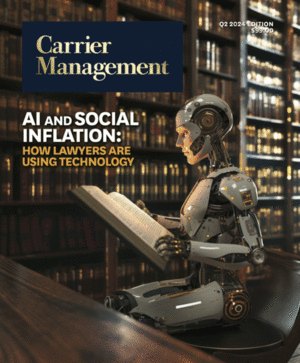 RMS is debuting its new cyber modeling system, entering a market that CEO Hemant Shah has said is a “pretty significant opportunity for the industry.” What’s more, the firm collaborated with a number of key industry companies.
RMS is debuting its new cyber modeling system, entering a market that CEO Hemant Shah has said is a “pretty significant opportunity for the industry.” What’s more, the firm collaborated with a number of key industry companies.
RMS, which made a formal announcement of the release on Feb. 2, said it developed the system in collaboration with the Cambridge Centre of Risk Studies, and also with support from Amlin Plc., Aon Benfield, AXIS Capital, Barbican Insurance Group, Canopius Managing Agents Ltd. and SJNK Inc., RenaissanceRe Holdings, Talbot Underwriting and XL Catlin.
Here’s what the market will be getting: the RMS Cyber Accumulation Management System, which includes a new software system, framework for cyber exposure reporting and a series of cyber catastrophe scenarios for loss modeling. Carrier Management first reported on Jan. 12 that RMS would be releasing cyber risk models, with the first roll-out set to take place in February.
Hemant, speaking with Carrier Management at the Property/Casualty Insurance Joint Industry Forum, said that RMS has a team dedicated to developing cyber risk models, and revealed the planned February launch of its first wave of products in the space. He said that there will also be launch seminars planned in London and New York through the month.
Shah said in prepared remarks that he sees cyber insurance as a “fundamental driver of growth” for global insurers and reinsurers, and he sees the company’s new release as “an important first step” toward the development of models and tools that allow the sector to “safely grow capacity.”
In a related matter, the Cambridge Centre for Risk Studies, working with RMS, also released a new cyber-related report that zeroes in on concepts to help quantify accumulation risk to help firms reveal their portfolio’s loss potential.
The report notes five common cyber loss processes that can trigger the use of cyber insurance: the systemic release of confidential customer records, denial-of-service attack, cloud service provider failure, cyber attacks that compromise financial transactions and cyber extortion.
Source: RMS
Topics Cyber




















 Study Finds Link Between Mass Layoffs and Data Breaches
Study Finds Link Between Mass Layoffs and Data Breaches  Study Urges Rethinking of Disaster Management in Era of Compounding Events
Study Urges Rethinking of Disaster Management in Era of Compounding Events  How to Outperform: Don’t Outsource Underwriting; Manage Cycles
How to Outperform: Don’t Outsource Underwriting; Manage Cycles  Trigger Warning: Cyber Policy Wordings to Impact Coverage for Tech Outage
Trigger Warning: Cyber Policy Wordings to Impact Coverage for Tech Outage 








